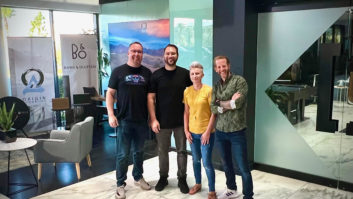
Imagine you are standing in the rain at a train station. Now imagine two different scenarios, both involving a stranger who would like to borrow your phone.
- Scenario one: The stranger politely says, “Can I borrow your phone?”
- Scenario two: The stranger says, “I’m sorry about the rain. Can I borrow your phone?”
Do you think you would be more likely to lend your phone in one of these scenarios vs. the other? If so, how much more likely?
Both scenarios require a significant leap of trust. And, it would seem in either scenario that your own disposition, and not the addition of five seemingly trivial words (“I’m sorry about the rain”), would have a much stronger bearing on the outcome. In other words, most reasonable people would assume the outcomes in scenario one and scenario two would be approximately the same.
But most reasonable people would be wrong. Very wrong.
In fact, when Alison Wood Brooks of Harvard Business School performed an experiment based on these exact scenarios, she found that the subjects in scenario two were a staggering 422 percent more likely to lend their phone to the stranger!
The takeaway? Small relationship cues can have a disproportionate impact on the way people relate, feel, and behave. And this simple insight can have a profound effect on your efforts to build a high-performance team.
Also by Jason Griffing: Reinventing Your Integration Company
Our Obsession with Belonging
In one sense, the results of Brooks’ experiment are surprising — 422 percent is a big difference. On the other hand, we shouldn’t be shocked. The fact is that, as a result of hundreds of thousands of years of evolution, our unconscious brains are incredibly attuned to seek connection. It’s easy to gloss over the significance of this evolutionary wiring. But we should always remember that our desire for belonging is hard-coded into our DNA; it dates back to a time when being part of the tribe could literally mean the difference between life and death.
In his book, The Culture Code — the Secretes of Highly Successful Groups, author Daniel Coyle lays out a compelling argument that creating a sense of connection and belonging is one of the single most important ingredients of a high-performance culture.
He discusses a simple concept we can all leverage called belonging cues. In short, belonging cues are behaviors and signals that create a sense of psychological safety. Examples include eye contact, proximity, turn-taking/lack of interruptions, energy, tone of voice, and mimicry. Belonging cues are not isolated events, but rather a steady pulse of interactions that our unconscious brains continually monitor for an answer to the ever-present question: Am I safe here?
Coyle discusses how one of the most prominent patterns of interaction he observed in high-performance teams — groups like the Navy SEALS, IDEO, and Pixar — resided not in big, momentous occasions, but rather in the small, day-to-day interactions that, when put together, promote a strong sense of belonging among the group.
Patterns Coyle observed included:
- Short energetic exchanges: Very few interruptions or long monologues
- High levels of mixing: Everyone talks to everyone during group exchanges as opposed to everyone talking to the leader
- Physical touch: Profuse amounts of eye contact, handshakes, fist-bumps, hugs
- Inquisitiveness: Lots of thoughtful questions and attentive listening
- Humor: Plenty of laughter
- Courteousness: Things like opening doors and saying thank you
Also by Jason Griffing: Team Management – Achieving Total Clarity
The Role of Belonging in High-Performance Teams
“Safety is not mere emotional weather, but rather the foundation on which a strong culture is built” —Daniel Coyle, The Culture Code
Just like the statement “sorry about the rain,” in Brooks’ cell phone experiment, a belonging cue may seem insignificant when viewed in isolation. In actuality, each one plays a critical role in reinforcing a sense of connection and openness amongst your team. This type of culture alone can pave the way for such critical behaviors as risk-taking, openly sharing ideas, providing tough feedback, creative problem solving, and more.
Consider the role of belonging in your efforts to create a high-performing team. It turns out the small changes in the way you and your team interact can have an outsized impact, creating the type of culture needed to go from mediocrity to excellence.
Jason Griffing is the director of product at OneVision Resources and the co-host of weekly home technology podcast found at HomeTech.fm.







